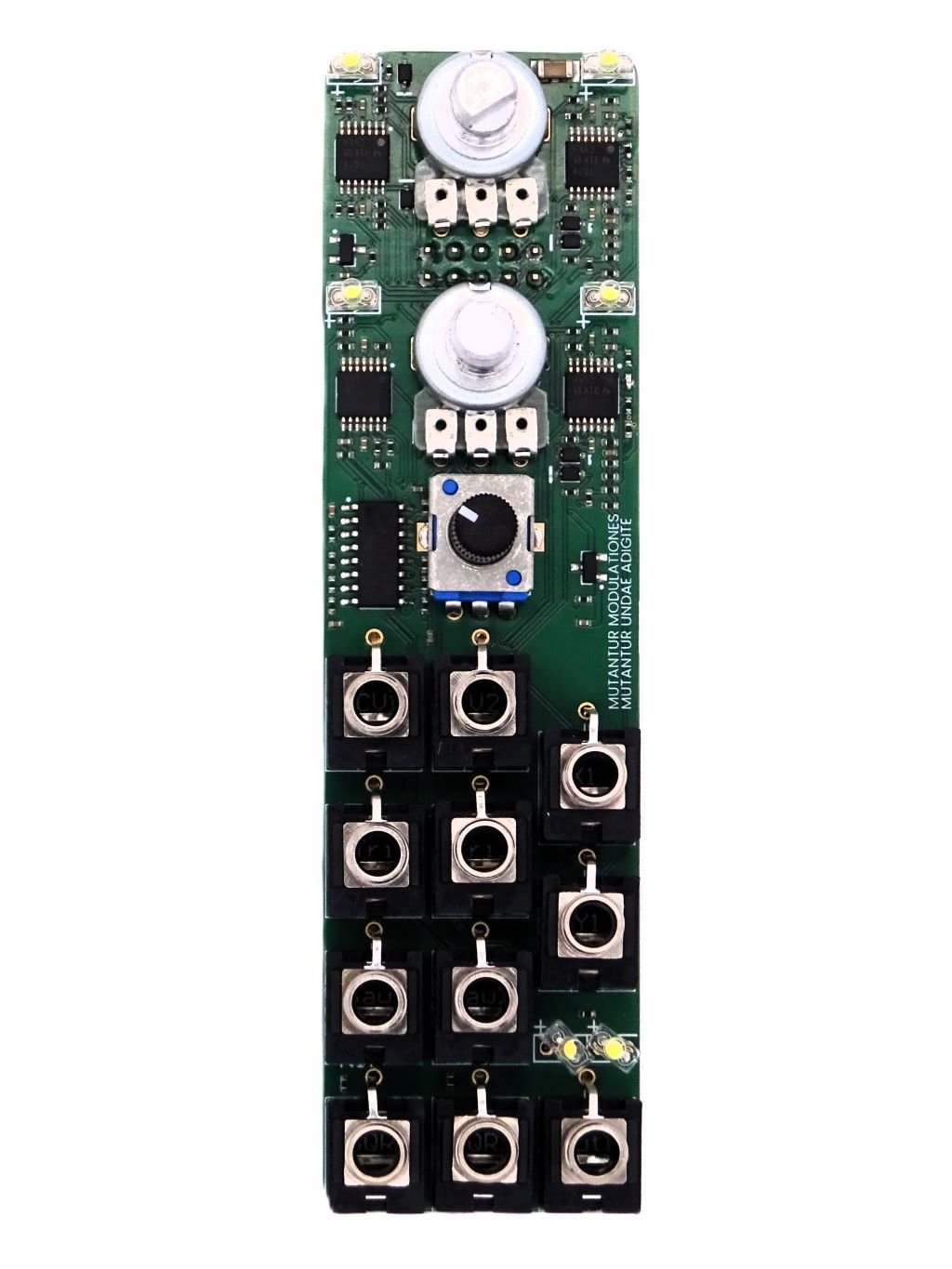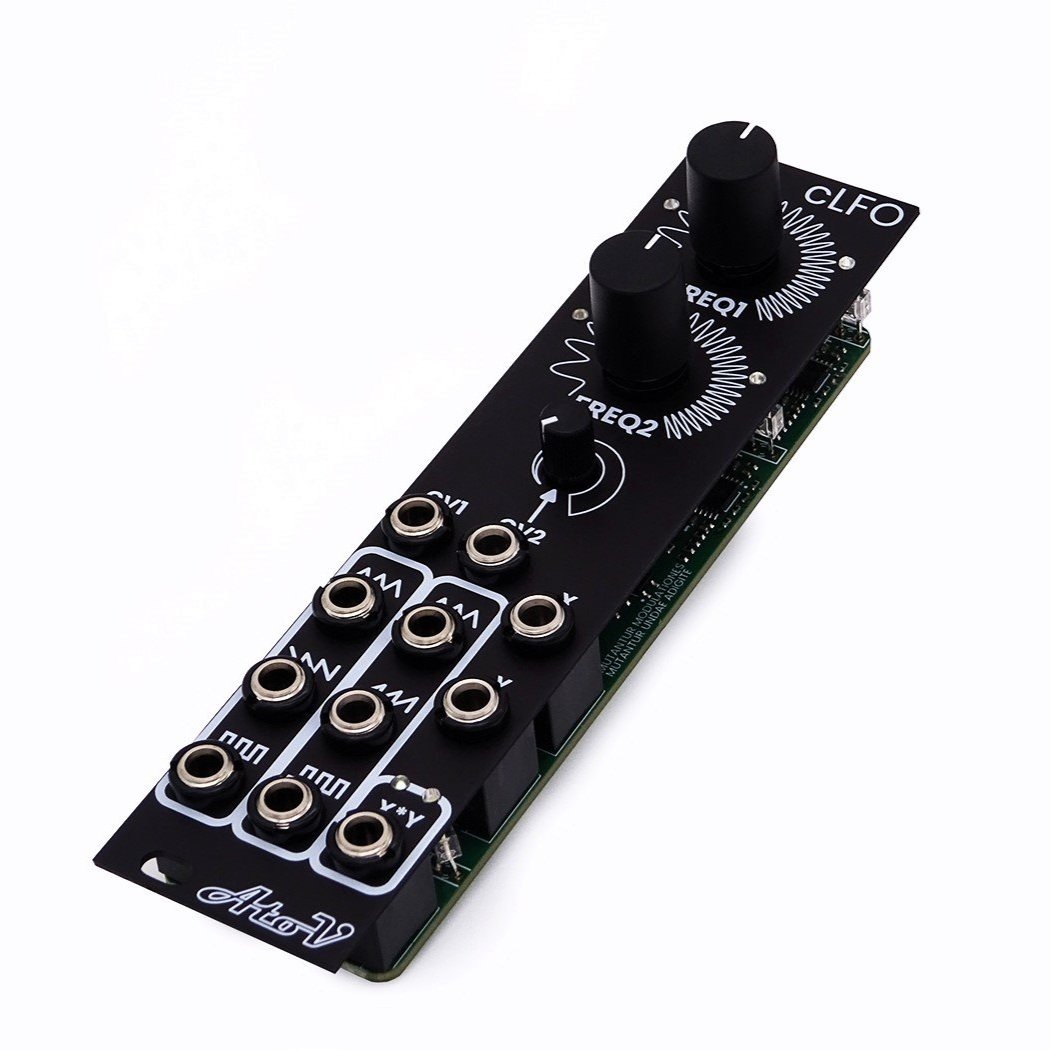AtoVproject cLFO - DIY kit
Introduction
Thank you very much for purchasing one of our DIY kits.
This manual is aimed at guiding you step by step through the process of assembling an AtoVproject cDVCA. If you have any questions or if you are missing a part please contact us at Support@atovproject.de.
Required tools and materials
First, to successfully build this DIY kit, you will need a few tools and materials.
Soldering Iron
No need for a high-end iron. Temperature control is preferable to avoid burning the flux in your solder and leaving residues. With prolonged use, higher than necessary temperatures will damage your soldering iron tip. We recommend the TS-100 or TS-80 digital soldering irons for hobbist use. As professional tools we use the JBC CD-2BQF with a range of tips.
Solder
We recommend lead-free solder as it is gentler on the environment and your health.
We have tested a lot of solder over the years and we now recommend the Stannol Kristall 611 TSC - Sn96.5Ag3Cu0.5. For a good all-rounder we would recommend 0.7 mm diameter solder. This is a truly no-clean solder; leaving very little residue, a great finish and with odorless flux fumes. (They do not sponsor us, we just very much like their product and we use them in our production line -Bonus- Their customer service is great!)
Side cutter
We like flush cutters but side cutters will also work. Any cheap cutters will do but higher quality tools will last longer. Knipex is our go to in the workshop
Multimeter
This is important to have for testing and troubleshooting. Use a multimeter with continuity mode. Our reliable and inexpensive multimeter recommendation is the ANENG AN8009. If you are in the market for a professional tool, we use the Brymen BM867s (or BM869s if you need temperature probing)
Flux (optional but recommended)
Liquid no-clean flux is sufficient for such a build. In our workshop we use Stannol 32-10/i no-clean flux pen.
Oscilloscope (optional, could be a good investment if you want to get serious into electronics)
We use the Siglent SDS1104X-E which has been fulfilling our needs until now. Unfortunately, we don't have experience with cheaper oscilloscopes. But I would recommend getting a digital one instead of analog as they have measuring tools, memory, take snapshots, can decode digital signals etc… Good oscilloscopes are expensive and this one is a great budget option.
Secondly, to build this kit you need to know how to solder. If you want to learn how to solder, our recommendation is to purchase an inexpensive DIY kit from your local electronics shop. This will allow you to train yourself at soldering and build confidence before building a more complex kit.
If you need a small refresh on soldering techniques, here is a tutorial https://www.youtube.com/watch?v=Qps9woUGkvI
Opening the kit
The kit should contain:
1 x panel
1 x PCB populated with SMD components
1 x bag of parts
2 x knobs
1 x Eurorack power cable
Open the bag cLFO Parts. Make sure this bag contains the following.
2 x potentiometer + nuts
1 Tall trimmer
11 x jacks + nuts
6 x LEDs
1 x 2*5 pin header
Check if the kit is complete as well the state of the provided parts. We inspect inspect everything in the workshop but it's possible that damages occur during shipping. If there are any obvious defect on any of the parts provided please contact us, we will provide a replacement.
Part 1 - Back Side
There is only one part to solder on the back of the PCB, the 2*5 pin header used a Eurorack power connector.
Put the connector in its location and solder one pin. I would recommend soldering a pin in a corner of the connector. The central pins are connected to ground and because of the internal ground plane take a more heat to solder.
When this is done, check if the connector is flush against the PCBs. If this is not the case. Reheat the pin you previously soldered and push the connector down with your finger. Remove the iron and let the solder resolidify.
When everything looks good, proceed then to solder the rest of the pins.
Part 2 - Front Side
Start by placing the small circular sticker on the capacitor that will be under the second potentiometer.
Then the 2 potentiometers and the tall trimmer (potentiometer with black plastic shaft). These are “snap in” they will therefore snap in place and hold on the PCB.
Make sure they are pushed all the way against the PCB. Once done, you can proceed to place the 11 jacks.
Then place the LED
Important note regarding the LEDs in PCB version 1.0 :
The top two LED should be inserted according to the silkscreen (long leg on +). However, there is a silkscreen error on the other 4 LEDs and the polarity should be inverted (short leg on +).
The bottom two LEDs next to the output jack of the ring modulator are very close to each other and are difficult to put through the panel like that. The solution is to insert them into the PCB and then twist them a bit as shown in the pictures.
Place the front panel and use a nut on one of the potentiometer to secure it in place. Then place some tape on the LED holes (painters tape works great because it is designed not to leave traces). Push the LEDs into their holes and against the tape. This will hold them in place.
Then you can flip the module around and solder the components.
Testing
This guide outlines the process for testing the module, which doesn't require calibration, allowing you to proceed directly to the testing phase.
1. Powering On and Initial Setup:
- Begin by turning on the module.
- Adjust the CV2 attenuator to its minimum setting.
2. LEDs and Frequency Adjustment:
- Observe that the LEDs illuminate.
- By adjusting the FREQ potentiometer, you can increase or decrease the frequency of the corresponding LFO (Low Frequency Oscillator).
3. Modulating the Second LFO:
- Increasing the CV2 attenuator will result in the second LFO's frequency being modulated by the triangle waveform of the first LFO.
4. Inputting Control Voltage:
- Introducing a control voltage (CV) into the CV1 input should alter the frequency of LFO1.
5. Testing Waveform Outputs:
- Proceed to test all the waveform outputs by routing these waveforms to a parameter you wish to modulate. Utilizing VCO (Voltage-Controlled Oscillator) frequency control inputs can yield clearly noticeable results. Ensure each waveform transmits the anticipated signal.
6. Examining the Ring Modulator's Output:
- Finally, examine the X*Y output from the ring modulator by connecting this output to a VCO's frequency control input.
Any issues? Contact us at Support@atovproject.de
Part 4 - Final assembly
When everything works well, then you can finally install the remaining jack and pot nuts. Put the push on knobs onto the potentiometers.
Congratulations! Your AtoVproject cLFO is now complete and fully functional!













